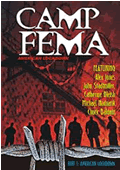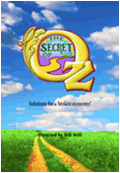PART 3
By Thomas R. Horn
December 13, 2014
NewsWithViews.com
PART 3 -- Susan Atkins: From Gold Stars In Sunday School to a Child of Satan
Atkins’
involvement in the Tate/LaBianca murders varies from story to story
and from witness to witness. Depending on whom you’re listening
to, the tale spans from one of a sweet and innocent girl getting swept
away in 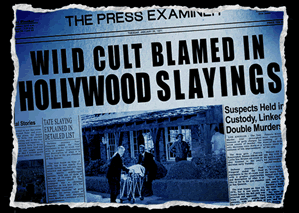 accomplishing
what she thought were good deeds as ordered by God, all the way to
one of a frenzied bloodbath by a drug-induced devil-hippie who laughed
and maimed her victims as she viciously slaughtered anything in her
path. According to the court, Atkins was guilty of multiple murders,
which fit with several of her initial braggart claims/testimonies.
However, her and Charles Watson's later retellings of the events,
and the official police reports of the initial crime scenes draw much
of this so-called truth under a blanket of mystery. If all the facts
regarding the many varying tales of those nights were to be written
out here and now, not only would the details be far too graphic to
include in this book, but the information is so plentiful that this
one case study would drag on for hundreds of pages. Thus, in an effort
to truncate the process and keep things clean, we will include a brief
bullet list of facts here and let the readers draw their own conclusion
as to her involvement:
accomplishing
what she thought were good deeds as ordered by God, all the way to
one of a frenzied bloodbath by a drug-induced devil-hippie who laughed
and maimed her victims as she viciously slaughtered anything in her
path. According to the court, Atkins was guilty of multiple murders,
which fit with several of her initial braggart claims/testimonies.
However, her and Charles Watson's later retellings of the events,
and the official police reports of the initial crime scenes draw much
of this so-called truth under a blanket of mystery. If all the facts
regarding the many varying tales of those nights were to be written
out here and now, not only would the details be far too graphic to
include in this book, but the information is so plentiful that this
one case study would drag on for hundreds of pages. Thus, in an effort
to truncate the process and keep things clean, we will include a brief
bullet list of facts here and let the readers draw their own conclusion
as to her involvement:
• According to many studies, drug and substance abuse can have far-ranging effects on the human mind, in some cases, even years after the abusive behavior has ceased. Many of Manson’s closest followers, including Atkins, were regularly into very heavy drug use (most references are to LSD, methedrine, and marijuana).
• Manson, with the influence of the said drugs he helped put into the hands of his followers, effectively established a radical cult, the epitome of a classic brainwash case wherein, under other circumstances, followers like Atkins might be considered victims of a con man. (Some witness accounts have suggested that he was most often sober himself, sometimes pretending to take drugs but actually operating with a clear mind in order to lead or manipulate “his flock,” though others say he always participated in taking drugs with the Family. In the 2004 movie remake of Helter Skelter starring Jeremy Davies, Manson is depicted as waiting until nobody is looking, then secretly pocketing the drugs—only pretending to take them.)
• Atkins knew about and was involved with the plan to kill Gary Hinman, but did not directly deliver his death (the deed was done by Bobby Beausoleil; more about this later).
• After the Tate murders, Atkins was present in the car that was parked in the LaBianca driveway just before the LaBianca murders were carried out, but other than the knowledge of intent to kill, she was not involved in any way with the LaBianca case (which is why we are not discussing that at length in this case study). While the LaBianca murders were happening, Atkins, along with Linda Kasabian and Steve “Clem” Grogan, made their way to Venice Beach with the plans to murder actor Saladin Nader, but the scheme was thwarted when Kasabian intentionally knocked on the wrong apartment door.
• Atkins bragged to several people (both in court and behind bars) that she had been the one to carry out the murder of Sharon Tate, including the disturbing divulgence of tasting blood and the plans to remove Tate’s unborn baby from her belly, the latter which she claimed she “did not have time”[i] to do.
• Many times both in and out of court in the days following the murders, Atkins changed her story as well as her demeanor, which erratically altered from a prim and proper lady or scared child graciously cooperating with her attorney to the giggling, singing, unrepentant court disrupter who has since been remembered most in the media.
• After a long separation from drugs, the cult, and Manson, and after a strong dose of reality hit her with a death sentence (later a life sentence) in prison, Atkins finally found one story to stick to. She stuck to it the rest of her days until death, purporting that despite the court hearings, testimonies, and sentencing: she did not actually bring an end to any human life; she did not taste blood; and she did not attempt to remove the unborn baby, nor had she ever planned to. (Tate’s body showed no evidence of attempted removal of the fetus, and, despite Atkins claiming she didn’t have time, there had been plenty of time and opportunity for this, especially for Atkins, whose bloody footprint on the concrete tells the story of her return into the house to increase racial/political crime-scene evidence by writing the word “PIG” on the door in blood.) Atkins relates in her book that these details were given because Manson pressured her to take full blame, denying her original statements to the grand jury, and she wanted to make it believable. Additional comments and testimonies from other Manson followers years later also reflect this as truth. As recorded by Investigation Discovery for the Discovery Channel’s Most Evil series, previous Family member and Family recruiter Catherine “Gypsy” Share reflects Atkins’ claim thus: “At the very end, [Manson] did everything he could to save his life and get the girls to take on more than they actually did, so that he wouldn’t get the death penalty. He did not wanna go to the gas chamber.” A minute later in her interview: “[The Manson girls] took it upon themselves to try to save Charlie Manson’s life, and say that ‘he had nothing to do with it,’ uh, this, this concocted story.”[ii]
• Atkins continued to admit to holding Tate down during the attack by Watson and, upon Tate’s pleading that the baby be allowed to live, Atkins told her she had no mercy for her. (When asked about this vicious comment, Atkins has always, in the original court hearings and up until her death, claimed she said this more to herself as encouragement to go through with Manson’s plan than as evidence of her own lack of mercy for the victim.)
• According to Atkins’ later telling of what happened that night: When Watson instructed Atkins to bind Frykowski’s hands, she did so with a towel; when Watson instructed Atkins to kill Frykowski, she raised the knife above him, but did not have the nerve to bring the knife down; he easily untied the towel and managed to escape to the yard, where he was then confronted by Watson. (In her book, Atkins admits she remembers injuring his legs with a knife, but there is some question of this detail, based on the following two bullets in this list.) Afterward, when Watson instructed Atkins to kill Tate, Atkins held the knife to her, but again did not have the nerve to follow through.
• The police reports and evidence brought to court by Prosecuting Attorney Vincent Bugliosi during the trial showed that the stab wounds were caused by Watson’s knife, not Atkins’. Atkins’ knife was lost at the scene of the crime and later found wedged between Tate’s couch cushions; the blade was clean and there was no evidence the weapon had ever been used.
• Since the trials, Watson has many times openly confirmed Atkins’ version of the story, implicating himself as the actual killer.
So,
what kind of person was this young girl? What was her childhood like?
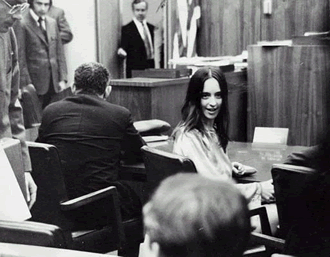 Certainly,
she was responsible for her own actions and decisions. Nobody is attempting
to dispute that here. But at only twenty-one years old at the time
her life took such a serious turn, could she have even had enough
life behind her to know who she was? Would she, in later years, while
referring to her conversion in the true Christ, have been capable
of meaning it?
Certainly,
she was responsible for her own actions and decisions. Nobody is attempting
to dispute that here. But at only twenty-one years old at the time
her life took such a serious turn, could she have even had enough
life behind her to know who she was? Would she, in later years, while
referring to her conversion in the true Christ, have been capable
of meaning it?
Then if any man shall say unto you, Lo, here is Christ, or there; believe it not. For there shall arise false Christs, and false prophets, and shall shew great signs and wonders; insomuch that, if it were possible, they shall deceive the very elect. (Matthew 24:23–24)
This Scripture appears first and foremost in the book, Child of Satan, Child of God, by Susan Atkins and Bob Slosser, an “in her own words” autobiographical essay of the events up to, during, and after Atkins’ involvement with the Manson Family murders. It is interesting that even the Bible offers such solid and inarguable words on the subject of whether someone can be truly deceived by a false Christ, and then follows those words with a qualifier of who might be deceived: the very elect. What does that mean, exactly?
There have been many translations and dissections of this verse, but the most popular and seemingly sound conclusion among learned theologians is this: In the same way we would “elect” a person in our modern terminology to fulfill a certain role or office (such as in government), we are choosing that person and making a certain covenant or promissory relationship with him or her. This person is “the chosen one” in and for that position. In extension, “the very elect” likely means “God’s chosen people.”
Beyond that, what could this verse have meant to Atkins personally? In the mind of a previous Manson follower, who are the elect, and who is the deceiver?
Let’s rewind a little and take a breather from the images of the knife-wielding, giggling, crazy-eyed youths we all have in our minds from the media coverage of the original Manson murder trials and look at who Atkins was before the encounters with her own false Christ.
The Bible: A Child’s Reward
On a Sunday morning church service in 1951, a small, shy girl outstretched a nervous hand to the man in the black robe. He shook it and proceeded to hand her a Bible with her name etched on the cover in gold letters while she stood at the front of the aisle before a full congregation of onlookers. This Bible, given to the beholder of the most gold stars received in Sunday school, was awarded to little Susan Atkins. Behind the man in the black robe stood a tall cross. As Atkins explains in her book, she doesn’t know how she knew that the Man on this cross was Jesus Christ, as she had never been in the sanctuary before, but somehow she knew it was Him. With childlike innocence, she gazed up at Him and wondered why He was hanging there. This scene unfolds in her book with something familiar to many in regards to the first time we see Jesus as children. She knew He was good. She wanted to please Him, she wanted to know Him, and she wanted Him to love her, but she did not know Him and could not understand why He had to hang on a cross. Her curiosity about this Man was no different than many young children in church just barely beginning to grasp that the somber, long-haired white Man with the gentle but sad face, often depicted with blood still trickling from His wounds in His final moments before a historically violent death, was someone important to everyone…to her. She felt a hunger to know more about this Jesus mystery, even at such a young age.
Just weeks after this memory, the easily frightened girl watched in horror as a close friend of hers who had come to pick up kids for church suddenly screamed and dropped dead of a brain hemorrhage in her driveway. Unable to understand whether Jesus loved this man as much as He loved the children, she refused to go to church for a while.
She
recalls another time when, a few years later during rolling thunder,
she 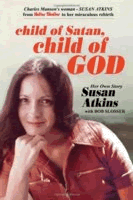 ran
to her award Bible for comfort from the storm. By accident, she caught
the back of the Bible cover on fire while looking at the pictures
by candlelight. A panic ensued, she and her mother frantically attempting
to extinguish the flames. When the damage was done and the book was
once again still, the book of Revelation burned straight through,
she hid it in her bottom drawer, certain that God could not and would
not forgive her for setting His Word on fire.
ran
to her award Bible for comfort from the storm. By accident, she caught
the back of the Bible cover on fire while looking at the pictures
by candlelight. A panic ensued, she and her mother frantically attempting
to extinguish the flames. When the damage was done and the book was
once again still, the book of Revelation burned straight through,
she hid it in her bottom drawer, certain that God could not and would
not forgive her for setting His Word on fire.
As time went on, Atkins lived life recklessly (in her own words), and then repeatedly beat everyone else to the altar for prayer on Sunday mornings to repent of her sins. She also tested God: Once she offered Him the gift of a pink rose she had hidden in the backyard and, discovering that He “took” the gift in the middle of the night, came to believe that He had proved Himself to her.
On another very important occasion in her life, Atkins saw a vision in the late summer that she believed was God, Himself, reaching out to talk to her. It was an otherwise ordinary day she had spent playing hopscotch outside. Not knowing why, or even how, to explain the strength of the feeling that had come over her, she had the urge to stop what she was doing right then and look behind her. Pivoting around, she stopped dead in her tracks on the sidewalk, frozen in fear. She describes in her book what she saw: “Right before my eyes, just a few hundred yards away, was a huge burning cross. It covered half the hill—at least a hundred feet wide and a hundred feet long. I stared at it for several moments, but it was so bright it actually caused a slight pain in my eyes.”[iii] When she ran into the house to tell her father what she had seen—screaming that the hill was on fire and that it was the shape of a cross—and to beg him to come take a look, he told her that her eyes were playing tricks on her.
Because
he couldn’t smell any smoke, he sent her back out to double
check the frightening scene by herself while he continued to read
the newspaper. The cross and flames were gone. She sat and cried,
knowing what she had seen, and believing that it was God, although
she didn’t know why. There didn’t seem to be anyone available
for her to talk to about it and to help her understand what the huge
burning cross may have meant, so she decided that, for the time being,
she would internalize the episode. (Her father’s reaction was
interesting, to say the least. Burning crosses in the news in those
days usually related to racial tension involving the Ku Klux Klan.
Perhaps, in their area, he knew this was unlikely, or maybe little
Susan was often the little girl who cried wolf. But for a man’s
child to rush through the door reporting a huge fire outside the house
in the shape of a cross and his response to be to ignore it and continue
reading the paper—that’s difficult to understand.)
Early Warning Signs Ignored
The list of Atkins’ interest in dangerous behavior at a very young age grew, especially after the death of her mother from cancer, to include: petty shoplifting; heavy bar drinking when she was years below the legal age; sleeping around; planning a melodramatic overdose, knowing her suicide scene would be discovered before she died, as an attempt to gain attention; running away from home until her brother hired a private detective to track her down to her seedy hotel room, where she found her drunk father begging her for a place to stay (she refused and watched her dad leave in tears); knowingly running with two prison convicts in breach of their parole and promising to marry one of them; and, of course, doing drugs.
To
read of Atkins’ life and feelings in her book is to read of
a profound  loneliness
occurring in vulnerable stages of life. The decisions she made, right
or wrong (and many were very wrong), were made alone and without support
from family or friends as she slid into one temporary situation after
another, practically raising herself, always leaving unfulfilled and
unspeakably empty. When she was eighteen, she experienced a crucial
moment that reflects the kind of decision patterns she had started
to adopt. She was living alone, and was old enough to start planning
her adult life, yet she was very much still a child. Not knowing what
to do with herself, she thought about her life and habits, pondering
what she had become and asking herself some paramount questions, such
as: “You’ve been in jail, you’ve deserted your family,
you’re an alcoholic, and you’re no better than a tramp
with the neighborhood men. How much lower can you get?” Feeling
as if there was no point in trying, since her current decisions/behaviors
weren’t getting her anywhere or anything but trouble, she answered
herself with, “I’ll show them how low I can get.”[iv]
loneliness
occurring in vulnerable stages of life. The decisions she made, right
or wrong (and many were very wrong), were made alone and without support
from family or friends as she slid into one temporary situation after
another, practically raising herself, always leaving unfulfilled and
unspeakably empty. When she was eighteen, she experienced a crucial
moment that reflects the kind of decision patterns she had started
to adopt. She was living alone, and was old enough to start planning
her adult life, yet she was very much still a child. Not knowing what
to do with herself, she thought about her life and habits, pondering
what she had become and asking herself some paramount questions, such
as: “You’ve been in jail, you’ve deserted your family,
you’re an alcoholic, and you’re no better than a tramp
with the neighborhood men. How much lower can you get?” Feeling
as if there was no point in trying, since her current decisions/behaviors
weren’t getting her anywhere or anything but trouble, she answered
herself with, “I’ll show them how low I can get.”[iv]
One doesn’t have to tune the violin strings on this case any tighter. Whether we look at this case with pity for a little girl lost or contempt for a hardened killer, we see that Atkins had every psychological symptom one can have to reveal a young life spinning in the wake of miserable abandonment, and any psychiatrist and/or psychologist these days would agree. It’s unfortunate, but not surprising, that her life quickly led her to face some very adult themes while she was still a child. Before long, she had taken to erotic dancing for money.
What many don’t know is how that part of her life connected her with Anton LaVey, the founder of the Church of Satan and author of The Satanic Bible. Perhaps Atkins’ identity is so associated with being a Manson Family killer that the contrast of her endeavors with and for the world’s most famous satanic priest is evidently not as worthy of mention. Yet, when studying the course of her life and what led her to become what she was, including what happened with her faith, this experience is obviously monumental, because it documents an acute point of directional change for her spiritually.
LaVey had come to see Atkins dance; her reputation as the best dancer at the club had intrigued him. After having decided that she was perfect for the part of “vampire” and “the witch in the torture scene”[v] in his upcoming topless witches’ sabbath production he planned to put on at her club, she found herself uneasily participating in the theatrics, unable to go through with the performance sober. After swallowing an acid tab, she settled into the part and shocked the audience with her portrayal of life and death, pointing at them and “marking” them as her next victims.
Needless to say, although perhaps not entirely beyond reach at this point, she was already, at the age of eighteen, into some very dangerous weirdness. Gary, Atkins’ boyfriend at the time (no relation to Manson Family victim Gary Hinman), sensed something more than theatrics when he addressed her with his concerns later that night. When he approached her, she was still high and wired on acid, and though she was polite and pleasant, he wasn’t surprised that she didn’t agree with his observations of how she was changing mysteriously, spiritually.
|
|
He had observed this from the first rehearsal, but the transformation was getting more extreme all the time, and the perfect execution of her character in the show was an intimidating escalation. Gary didn’t like what was happening to Atkins. When she responded to his pleading with a gentle dismissal, telling him that she had not changed and didn’t understand what he was referring to, he responded: “It’s hard to describe. But something’s happened to you. When you play your autoharp, for instance, it’s creepy. There’s a strange sound to it, and when you sing with it, it’s like something far out, from somewhere else.”[vi]
Atkins goes on to describe yet again another night walking the streets alone and lonely. Gary left her. Her chapter ends with this excerpt: “The show [referring to the Anton LaVey production] was a smash hit along the strip.… But the witches’ sabbath, and my total sellout to LSD, marijuana, and hashish, and to sex with virtually any attractive man, landed me in the hospital in four months. I was half dead from gonorrhea and had a complete physical breakdown.”[vii]
COMING UP NEXT: When Charles Manson Took Over The Role Of Jesus Christ
TO BE CONTINUED...
Click here for part -----> 1, 2, 3, 4,
© 2015 Thomas Horn - All Rights Reserve
Thomas Horn is the CEO of RaidersNewsUpdate.com and SurvivorMall.com.
Over the last decade, he has authored three books, wrote dozens of published editorials, and had several feature magazine articles. In addition to past articles at NewsWithViews.com , his works have been referred to by writers of the LA Times Syndicate, MSNBC, Christianity Today, Coast to Coast, World Net Daily, White House Correspondents and dozens of newsmagazines and press agencies around the globe. Tom's latest book is "The Ahriman Gate," which fictionalizes the use of biotechnology to resurrect Biblical Nephilim.
Thomas is also a well known radio personality who has guest-hosted and appeared on dozens of radio and television shows over the last 30 years, including "The 700 Club" and "Coast to Coast AM." When looking for a spokesperson to promote their film "Deceived" staring Louis Gossett Jr. and Judd Nelson, "Cloud 10 Pictures" selected Thomas as their spokesperson to explain the Christian viewpoint on UFO-related demonology.
Web Site: RaidersNewsUpdate.com
E-Mail: RaidersNewsUpdate@gmail.com



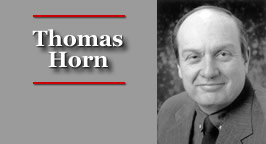

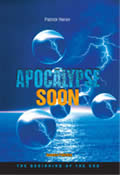


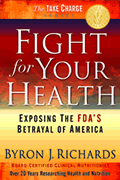

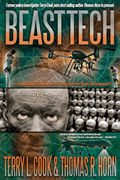




 Share This Article
Share This Article




